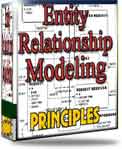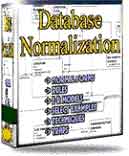 |
||
|
|
Work Breakdown StructureI BackgroundMan has, it has been always said, learnt to see further into the horizon by standing on the shoulder of giants. Whether it is the construction of the ubiquitous tire of a Formula 1 car from the first design of a wheel that rolled down an ancient hill, or the development of general relativity theory as an extension of Newton's theory of gravitation, this is how intellectual evolution has always been taking place. The Work Breakdown Structure is one such example. WBS, as it is affectionately called in PM circles, developed as a logical extension of the Gantt chart tool. WBS is the creation of Neil F. Albert, presently Director of the Cost Analysis Division of the Virginia-based MCR, Inc. An entire manual on WBS has been assembled under him in the Military standards documentation, released in March 1993 . Different people call it differently; other popular names are Product Breakdown Structure, Scope Breakdown Structure, Commitment structure, and so on. II Work Breakdown Structure DefinedWBS differs from the Gantt chart in one subtle feature. While the latter¡¦s emphasis is on timelines and tracking of project progress of individual tasks, Work Breakdown Structure involves decomposing these very individual tasks into major deliverables, which are then further subdivided into work packages. The result is an inverted hierarchical tree that has the first, macro-level Gantt chart at the root, and tasks and subtasks as branches, and work packages as leaves. WBS can also be structured as a list of tables of element, categories and tasks, and it is a matter of individual-project-manager preference to choose any of these styles. The leaves or work packages may be "low-level" or "high-level", depending on the depth of the tree that the PM wants to go to. The low-level leaves are more suited for a medium-complexity project; here, a work package may comprise activities that are grouped logically under an individual head. These activities are characterized by command verbs, such as prepare, evaluate, develop, determine, etc. The higher-level leaves evolve with the progress in planning of complex projects. Here, a work package comprises deliverables rather than low-level activities. Each deliverable can then be expanded later into activities. How much depth has to be achieved is a prerogative of the project manager to exercise. An optimum size of each work package should ideally be strived for, since a ballooned work package will slip out of hand, while a detailed and micro-managed work package will stifle individual responsibility and creativity. A Work Breakdown Structure comes with its own terminology and dictionary. This is important to communicate with all the players in the game in the same language, so that each word being uttered has the same meaning for everyone. III Benefits of Work Breakdown StructureWBS, as noted above, involves decomposing a major complex task or deliverable into its component parts, and by doing so, it makes clear the inter-relationships between those parts. A prime benefit of WBS is its effective aid in the planning process. As WBS evolves, it becomes easier to revise and update plans. Responsibilities can be assigned at different points of the WBS hierarchical tree, both managerial and technological. Plus, entire work packages can be assigned to appropriate skill groups, and for the project manager, the work-package/skill-group becomes a black box, which makes it easier to macro-manage. This wholesale assignment also facilitates en block assignment of resources to the work-package. Such an approach is especially useful if the work-package has to be outsourced to contractors; and also when the same work-package is being replicated in other tasks/locations. Because the timeline concept of Gantt chart carries over to WBS, tracking of progress at work-package level aids in more accurate fine-tuning of the progress of each task as a whole. In fact, well-developed WBSs can be archived and reused for future projects, too (with due credit given to the manager who developed the WBS so well in the first place!) IV End wordWork Breakdown Structure comes into picture when the project is large and complex. So, as a project manager, if your project happens to be erecting an additional glass panel in the office lobby; then a plain Gantt chart will suffice. However, if your project happens to be overseeing the construction and occupation of a chain of offices across the country, with material to be sourced from a combination of regional-level and local building-material suppliers, manpower to be sourced from local subcontractors, and a final delivery schedule of 6 months; then the WBS comes to your rescue. Enormous projects often threaten to overwhelm the best of project managers. When the project is first assigned, the initial butterflies that dance in the stomach are a natural psychological phenomenon. Starting with a fresh piece of paper; building the main blocks of the project in terms of the main players involved and their roles; then constructing the Gantt chart that bares all the tasks involved; helps to calm jumpy nerves: because the paper now shows some semblance of control over the project. By the time you reach the stage where WBS's have to be prepared, your breathing becomes very much even. And, going through the WBS process gives you a good night's sleep. Return to Software Project Management
|
Exclusive interviews with:
Free eBookSubscribe to my newsletter and get my ebook on Entity Relationship Modeling Principles as a free gift: What visitors say...
"I just stumbled accross your site looking for some normalization theory and I have to say it is fantastic.
Read more
Testimonials
I have been in the database field for 10+ years and I have never before come across such a useful site. Thank you for taking the time to put this site together." Mike, USA |
|
Theory & Practice DB Normalization Analysis Phase Database Keys DB Glossary Appl.Architecture Oracle DBA MySQL DBA SQL Server DBA Install Oracle Install SQL Server Proj.Management Oracle Constraint Programming Tips Database Normalization eBook: |
||
|
Copyright © www.databasedesign-resource.com /
All rights reserved. All information contained on this website is for informational purposes only. Disclaimer: www.databasedesign-resource.com does not warrant any company, product, service or any content contained herein. Return to top
The name Oracle is a trademark of Oracle Corporation. |
||